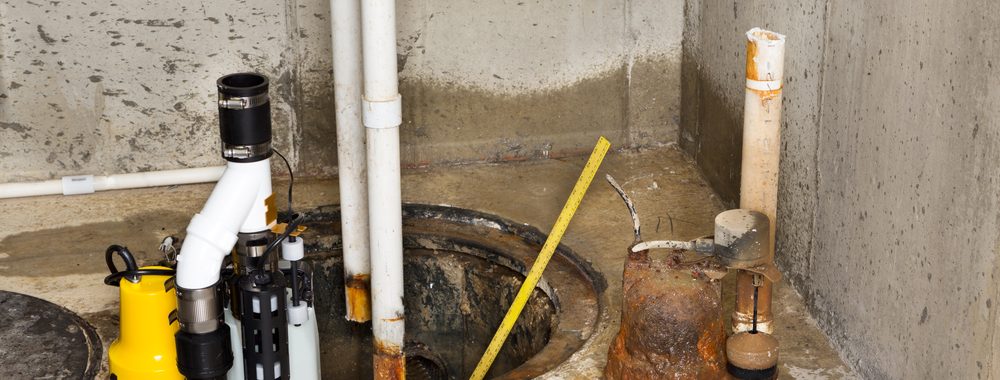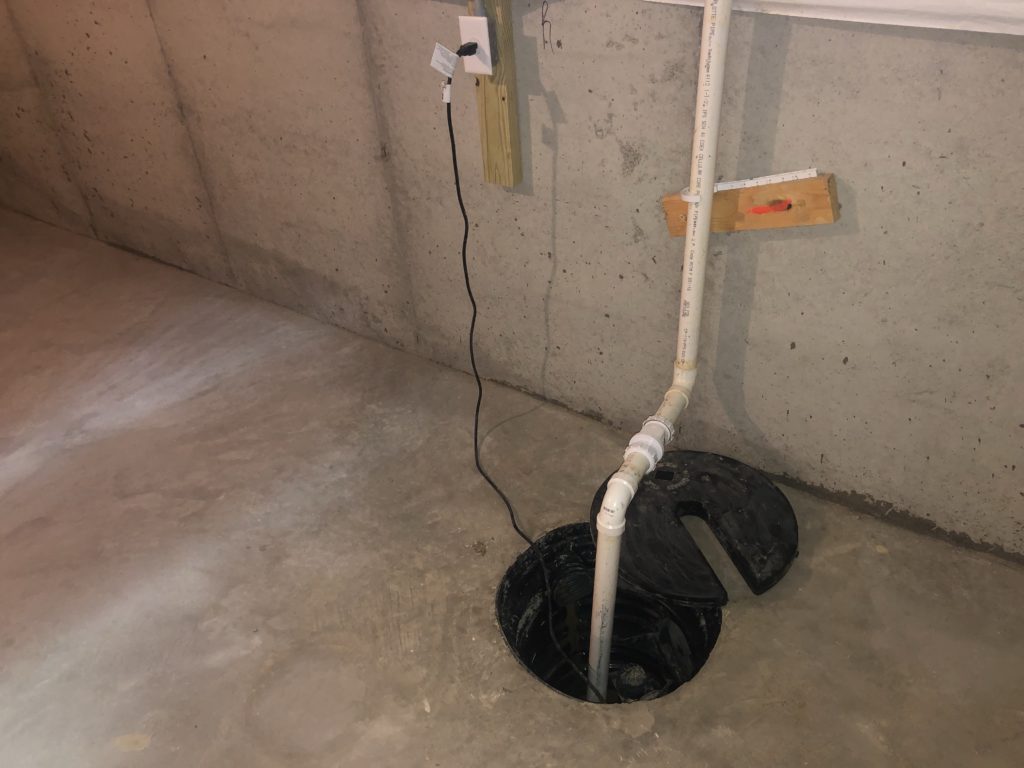Simple Methods to Care for a Sump Pump
Simple Methods to Care for a Sump Pump
Blog Article
Everybody has their own unique assumption about Steps to Cleaning Your Sump Pump Properly.

Sump pumps are crucial parts in numerous homes, specifically in areas vulnerable to flooding or extreme moisture. They help avoid water damage by effectively removing excess water from basements or crawl spaces. Nonetheless, like any other device, sump pumps need regular maintenance to guarantee they operate effectively when required the most. Cleaning your sump pump is a crucial part of its maintenance, and comprehending just how to do it properly can save you from expensive repair services and prospective disasters.
Intro
Maintaining a tidy sump pump is crucial for its correct performance and durability. Ignoring this vital job can result in blockages, breakdowns, and inevitably, water damages to your building. Consequently, finding out exactly how to cleanse a sump pump is crucial for homeowners that count on these devices to maintain their basements completely dry and secured.
Signs of a Dirty Sump Pump
Recognizing when your sump pump requires cleaning is crucial for protecting against prospective breakdowns. Some common indications that show a filthy sump pump consist of strange noises throughout procedure, reduced water flow, and noticeable particles in the pit. If you notice any of these symptoms, it's necessary to cleanse your sump pump without delay to avoid any additional concerns.
Planning for Cleansing
Prior to you start cleansing your sump pump, it's essential to take some safety preventative measures. Begin by turning off the power to the pump to stay clear of any electrical crashes. In addition, use ideal safety equipment, such as handwear covers and goggles, to shield on your own from dirt, debris, and possible pathogens.
Comprehending the Sump Pump
Before diving into the cleaning process, it's essential to have a fundamental understanding of how a sump pump functions. Usually set up in a pit or basin below the basement floor, a sump pump includes several crucial elements, consisting of a pump, a float button, and a discharge pipe. When water collects in the pit, the float button activates the pump, which then pumps the water out through the discharge pipe, away from the building's foundation.
Step-by-step Guide to Cleaning Up a Sump Pump
Shutting down the Power
Begin by detaching the power supply to the sump pump to avoid any accidents while cleansing.
Checking for Proper Performance
Prior to reinstalling the pump, execute a quick examination to make sure that the float button turns on the pump appropriately. Put some water right into the sump pit and observe the pump's operation. If every little thing is operating properly, you can reconstruct the pump and reconnect the power supply.
Removing Debris and Dirt
Use a container or an inside story to get rid of any kind of noticeable debris, dust, or sediment from the sump pit. Dispose of the debris properly to stop it from blocking the pump or the discharge pipeline.
Cleaning the Pump and Float Switch
As soon as the pit is clear of debris, meticulously eliminate the pump from the pit. Check the pump and the float switch for any indicators of damages or wear. Utilize a soft brush or fabric to cleanse the surface areas and get rid of any collected gunk.
Flushing the System
After cleaning the pump and float button, purge the sump pit with clean water to eliminate any continuing to be dirt or debris. This will help make certain that the pump runs efficiently and efficiently.
Maintenance Tips to Keep Your Sump Pump Clean
In addition to regular cleansing, there are numerous upkeep tips you can follow to maintain your sump pump in optimum problem:
Final thought
Cleaning your sump pump is a vital element of its upkeep and makes sure that it runs properly when you need it the most. By complying with the steps outlined in this overview and including routine upkeep right into your routine, you can expand the life-span of your sump pump and safeguard your home from water damage.
6 STEPS ON HOW TO CLEAN A SUMP PUMP PROPERLY
UNDERSTANDING SUMP PUMPS
Your sump pump plays a crucial role in protecting your home by managing and removing excess water. It primarily functions as a “shield”, guarding your basement against the damaging effects of water accumulation. The pump is housed in a sump pit in the lowest part of your basement, and its job is to pump out any water that collects there.
During heavy rainfalls or when snow melts rapidly, water can infiltrate your basement, posing potential risks like flooding, structural damage, and harmful mold growth. Here, the sump pump springs into action, pumping out the intruding water and directing it away from your home.
SAFETY FIRST
Before cleaning, remember to prioritize safety. Disconnect the sump pump from the power source to prevent any accidental electric shocks. Also, wear sturdy gloves to protect your hands from any sharp or dirty components within the pump.
REMOVE THE SUMP PUMP
After ensuring your safety, the next step is to remove the sump pump from its pit. Doing this might require careful maneuvering as you don’t want to damage any pump components. Once removed, clean the sump pit to remove any accumulated debris or sludge.
INSPECT THE PUMP
Inspect the pump for any visible signs of wear or damage. Check the power cord, float switch, and impeller housing. If any components look worn out or damaged, consider replacing them to ensure optimal performance.
CLEAN THE PUMP
Thoroughly clean the pump with warm, soapy water. Make sure to rid it of any dirt, gravel, or other debris that might impede its performance. You can use a toothbrush to clean the small, hard-to-reach parts of the pump.
REINSTALL THE SUMP PUMP
Reinstall the pump into the sump pit Make sure it’s positioned correctly to remove the water effectively Once it’s back in place, reconnect it to the power source TEST THE PUMP
Finally, pour some water into the pit to ensure the pump works correctly. It should start automatically and begin pumping out the water; if it doesn’t, check the power source and the positioning of the pump.
Remember, while cleaning your sump pump is an essential part of home maintenance, hiring a professional plumber for a thorough inspection and cleaning at least once a year is also important. This will ensure that your pump is in optimal condition, ready to protect your home from potential water damage.
BEST PRACTICES FOR CLEANING SUMP PUMP DISCHARGE PIPES
Regular Inspection: Regularly inspect your discharge pipes, especially during heavy rainfall or snowmelt periods. Look for any signs of blockage or damage. Early detection of problems can prevent serious issues down the line. Periodic Cleaning: Over time, sediment and debris can accumulate in the discharge pipes, impeding the flow of water. Regular cleaning helps keep the pipes clear and functioning efficiently. You can use a high-pressure water jet to effectively clean the pipes. Insulation During Winter: In colder climates, discharge pipes can freeze, blocking the outflow of water. Protect your discharge pipes from freezing temperatures by insulating them with foam pipe insulation. This will ensure the sump pump can continue to discharge water even in freezing conditions. Proper Positioning: The discharge pipe should be positioned to direct water away from your home’s foundation. Improper positioning can lead to water seeping back into the basement. Ensure the pipe is long enough and angled correctly. Installation of a Check Valve: A check valve prevents water from flowing back into your sump pit after the pump has pushed it out. Installing a check valve helps maintain the efficiency of your sump pump and reduces the risk of flooding. Minimize Pipe Turns: Every curve or turn in the discharge pipe can decrease the efficiency of water flow. By minimizing turns and bends in your discharge pipe, you can increase the efficiency of your sump pump. https://www.fullspeedplumbing.com/how-to-clean-a-sump-pump-properly9999/

As an avid person who reads on , I was thinking sharing that portion was a good idea. If you please pause to distribute this blog post if you liked it. I recognize the value of your readership.
More Details Report this page